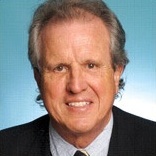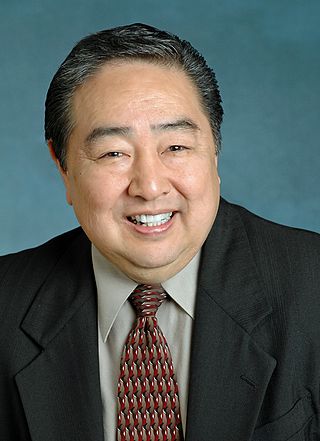
Recreational drug use is the use of one or more psychoactive drugs to induce an altered state of consciousness, either for pleasure or for some other casual purpose or pastime. When a psychoactive drug enters the user's body, it induces an intoxicating effect. Generally, recreational drugs are divided into three categories: depressants, stimulants, and hallucinogens.

Stimulants is an overarching term that covers many drugs including those that increase the activity of the central nervous system and the body, drugs that are pleasurable and invigorating, or drugs that have sympathomimetic effects. Stimulants are widely used throughout the world as prescription medicines as well as without a prescription as performance-enhancing or recreational drugs. Among narcotics, stimulants produce a noticeable crash or comedown at the end of their effects. The most frequently prescribed stimulants as of 2013 were lisdexamfetamine (Vyvanse), methylphenidate (Ritalin), and amphetamine (Adderall). It was estimated in 2015 that the percentage of the world population that had used cocaine during a year was 0.4%. For the category "amphetamines and prescription stimulants" the value was 0.7%, and for MDMA 0.4%.

Club drugs, also called rave drugs or party drugs, are a loosely defined category of recreational drugs which are associated with discothèques in the 1970s and nightclubs, dance clubs, electronic dance music (EDM) parties, and raves in the 1980s to today. Unlike many other categories, such as opiates and benzodiazepines, which are established according to pharmaceutical or chemical properties, club drugs are a "category of convenience", in which drugs are included due to the locations they are consumed and/or where the user goes while under the influence of the drugs. Club drugs are generally used by adolescents and young adults.
Drug rehabilitation is the process of medical or psychotherapeutic treatment for dependency on psychoactive substances such as alcohol, prescription drugs, and street drugs such as cannabis, cocaine, heroin or amphetamines. The general intent is to enable the patient to confront substance dependence, if present, and stop substance misuse to avoid the psychological, legal, financial, social, and physical consequences that can be caused.
Stimulant psychosis is a mental disorder characterized by psychotic symptoms. It involves and typically occurs following an overdose or several day 'binge' on psychostimulants; however, one study reported occurrences at regularly prescribed doses in approximately 0.1% of individuals within the first several weeks after starting amphetamine or methylphenidate therapy. Methamphetamine psychosis, or long-term effects of stimulant use in the brain, depend upon genetics and may persist for some time.

The National Institute on Drug Abuse (NIDA) is a United States federal government research institute whose mission is to "advance science on the causes and consequences of drug use and addiction and to apply that knowledge to improve individual and public health."
Drugs and prostitution have been documented to have a direct correlation.
Substance dependence, also known as drug dependence, is a biopsychological situation whereby an individual's functionality is dependent on the necessitated re-consumption of a psychoactive substance because of an adaptive state that has developed within the individual from psychoactive substance consumption that results in the experience of withdrawal and that necessitates the re-consumption of the drug. A drug addiction, a distinct concept from substance dependence, is defined as compulsive, out-of-control drug use, despite negative consequences. An addictive drug is a drug which is both rewarding and reinforcing. ΔFosB, a gene transcription factor, is now known to be a critical component and common factor in the development of virtually all forms of behavioral and drug addictions, but not dependence.
Lacing or cutting, in drug culture, refer to the act of using a substance to adulterate substances independent of the reason. The resulting substance is laced or cut.
Phoenix House is a nonprofit drug and alcohol rehabilitation organization operating in ten states with 150 programs. Programs serve individuals, families, and communities affected by substance abuse and dependency.

David E. Smith is an American medical doctor from the United States specializing in addiction medicine, the psycho-pharmacology of drugs, new research strategies in the management of drug abuse problems, and proper prescribing practices for physicians. He is the Founder of the Haight Ashbury Free Clinics of San Francisco, a Fellow and Past President of the American Society of Addiction Medicine, Past President of the California Society of Addiction Medicine, Past Medical Director for the California State Department of Alcohol and Drug Programs, Past Medical Director for the California Collaborative Center for Substance Abuse Policy Research, and former adviser to the Betty Ford Center.

Methamphetamine is a potent central nervous system (CNS) stimulant that is mainly used as a recreational drug and less commonly as a second-line treatment for attention deficit hyperactivity disorder and obesity. Methamphetamine was discovered in 1893 and exists as two enantiomers: levo-methamphetamine and dextro-methamphetamine. Methamphetamine properly refers to a specific chemical substance, the racemic free base, which is an equal mixture of levomethamphetamine and dextromethamphetamine in their pure amine forms, but the hydrochloride salt, commonly called crystal meth, is widely used. Methamphetamine is rarely prescribed over concerns involving human neurotoxicity and potential for recreational use as an aphrodisiac and euphoriant, among other concerns, as well as the availability of safer substitute drugs with comparable treatment efficacy such as Adderall and Vyvanse. Dextroamphetamine is a stronger CNS stimulant than levomethamphetamine.

The drug policy in the United States is the activity of the federal government relating to the regulation of drugs. Starting in the early 1900s the United States government began enforcing drug policies. These policies criminalized drugs such as opium, morphine, heroine, and cocaine outside of medical use. The drug policies put into place are enforced by the Food and Drug Administration and the Drug Enforcement Administration. Classification of Drugs are defined and enforced using the Controlled Substance Act, which lists different drugs into their respective substances based on its potential of abuse and potential for medical use. Four different categories of drugs are Alcohol, Cannabis, Opioids, and Stimulants.

The Haight Ashbury Free Clinics, Inc. is a free health care service provider serving more than 34,000 people in Northern California.

A psychoactive drug, psychopharmaceutical, psychoactive agent, or psychotropic drug is a chemical substance that changes the function of the nervous system and results in alterations of perception, mood, cognition, and behavior. These substances may be used medically, recreationally, for spiritual reasons, or for research. Some categories of psychoactive drugs may be prescribed by physicians and other healthcare practitioners because of their therapeutic value.

Darryl S. Inaba, PharmD., was born June 16, 1946, in Denver, Colorado. He is the remaining owner and President of CNS Productions, Inc. in Medford, OR. He is an associate professor of Pharmacology at the UCSF Medical Center in San Francisco, California, and the Director of Clinical and Behavioral Health Services at ARC in Medford, Oregon. He is also special consultant and instructor for the University of Utah School of Alcoholism and Other Drug Dependencies, as well as the Director of Education and Research at CNS Productions. Dr. Inaba is also on the editorial board of the Journal of Psychoactive Drugs, which has been published since 1967.

William Edgar Cohen was the president of CNS Productions, Inc. and co-author of Uppers, Downers, All Arounders, a textbook on the neurochemistry and neuropharmacology of psychoactive drugs. Additionally, he wrote and directed over two hundred teaching films and documentaries. Cohen was born in Washington, D.C., and raised in New York City.
CNS Productions is a publisher of educational materials — primarily textbooks and instructional DVDs — dealing with psychoactive drugs and addiction. It was formed in 1983 by Paul Steinbroner, with long-time collaborator William E. Cohen who had an extensive background in medical film production. CNS Productions has produced and distributed over fifty separate titles on issues related to the neurobehavioral effects of psychoactive drugs.
Stimulant use disorder is a type of substance use disorder where the use of stimulants caused clinically significant impairment or distress. It is defined in the DSM-5 as "the continued use of amphetamine-type substances, cocaine, or other stimulants leading to clinically significant impairment or distress, from mild to severe". These psychoactive drugs, known as stimulants, are among the most widely used drugs in the world today, although not all stimulants can induce addiction. Approximately 200 million Americans have used some type of stimulant in the past year alone.











